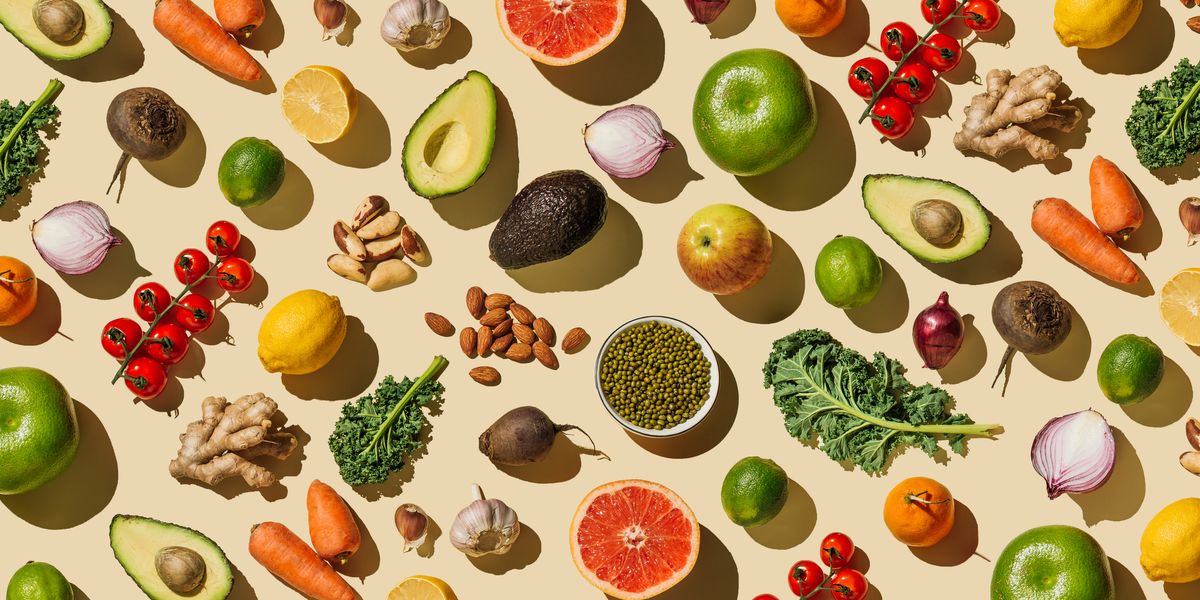Tanya IvanovaGetty Images
In recent years we’ve learned a lot about our microbiome: the life that takes place in our gut. We now know that a healthy intestinal flora means that there are many different types of organisms in our gut and that with a healthy lifestyle, we can ensure that our intestinal flora works better.
And this turns out to be very important: for our physical health, our resistance, nutrient absorption and even our mental health. The study of the American gut has played a major role in the knowledge we now have about the intestinal flora. In this study, thousands of samples were collected to find out what a healthy microbiome means and how we can influence it.
One of the most important findings: The more varied our food intake, the healthier our gut flora. Then it mainly comes down to the variety of plant products that we eat: vegetables and fruits, as well as grains, seeds, nuts, seeds, and even herbs and spices. In one AHG study publication, it was stated that people who ate more than 30 different types of ‘plants’ per week had healthier intestinal flora than people who consumed less variety. Are you up to the challenge? Read here how you too can reach 30!
Why 30 different types of plants?
Researchers have discovered that choosing a vegetarian or vegan lifestyle, for example, is not critical to healthy intestinal flora. More important is how many different types of plants you get in your diet. Vegetable products (such as grains, seeds, grains, and fruits) contain different types of fiber and it is precisely these different types that are important. By eating many different types, you are always getting different types of fiber. This, in turn, leads to a diversification of the intestinal flora.
Step 1: How many types of plants do you eat now?
Researchers hypothesize 30 different types of plants. This does not mean that 29 is as good or bad as 10. The more variety, the better. But how far are you from those 30 types? Make a list for yourself of all kinds of plant products you’ve eaten in the past week. No idea? Then keep it to yourself for a week. Below you can see examples of the different categories and all you can count on. The good thing about this is: You don’t have to keep track of how much of everything you ate. Did you eat 1 kiwi or, say, a handful of walnuts? Check, 2 points in!
- Vegetables: fresh vegetables (prepared cold or warm), canned or crushed legumes, frozen vegetables, sweet potatoes, “regular” potatoes, garlic, onions (green), fresh chili peppers.
- Fruit: fresh fruit, dried (frozen) fruit, canned or frozen fruit
- Grains: Oatmeal, rye flakes, buckwheat, quinoa, wild rice, barley and spelled flakes
- Seeds and grains: chia seeds, sesame seeds, flax seeds, pine nuts, pumpkin seeds, sunflower seeds, coconut.
- Nuts: All nuts (also likely fried/salted), including peanuts
- Herbs: Fresh and dried herbs such as oregano, thyme, basil, parsley, and mint
- Spices: cinnamon, curry, dried chili pepper, paprika powder, cumin, nutmeg
- Oil: olive oil, sesame oil, and walnut oil
Step 2: Make it easy on yourself
By modifying some of your standard meals, you can easily get more variety. For example, do you eat oatmeal in the morning? For example, replace half of the oatmeal with rye or spelled flakes. Sprinkle with cinnamon and eat with a mixture of (dried) fruits.
Do you like to eat nuts in between? Then choose a mix of different types: Each different variety counts as one of 30. The same goes for a mix of seeds in your salad or a fruit salad instead of a single piece of fruit.
By combining different types of vegetables in the evening you also get some types (for example, choose an oriental, Japanese or Thai mix so that you can quickly eat 3-5 different types in one meal) and replace white rice and pasta with wild rice, quinoa or spelled black. basil in your pasta, cilantro in your curry or chili in your chili.

“Total coffee specialist. Hardcore reader. Incurable music scholar. Web guru. Freelance troublemaker. Problem solver. Travel trailblazer.”






More Stories
“Ask at least one question in return.”
Elbendamers in the Sun: What a Wonderful Little Village
European Space Agency – Space for Kids